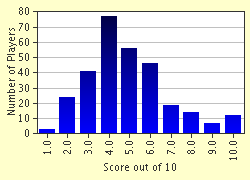Quiz Answer Key and Fun Facts
1. CQB environments are tricky and very dangerous. Reflecting this, hallways are often referred to by an alliterative nickname. What is it?
2. Other than hallways, which CQB consideration is generally the most problematic?
3. If a bomb is suspected to be in the area of a CQB entry, the entry team will reduce the amount of radio usage.
4. A "call-out" (i.e. something to the effect of "This is the police, come out with your hands up" etc.) is required before a police entry team physically enters any structure to make an arrest.
5. Members of an entry team adopt different roles, depending on their equipment loadout and assigned duties. What role do I most likely have if I am carrying a Benelli M3 Super 90?
6. "To ninja, or not to ninja?" Many police entry teams have generated controversy by adopting a frightening, all black, hooded presence to generate fear in the criminal element. What is the term for the specialized hood worn by such entry teams?
7. Are MOUT and CQB related?
8. CQB Operators tend to heavily customize their weapons. Which of the following weapon accessories is the least suitable for CQB operations?
9. Perhaps the most dreaded and feared CQB environment faced by police and military units is the cabin of an airliner. Very rarely does a combat situation aboard an airliner resolve well. There was one such event in Mogadishu in 1977 that DID resolve well... in fact, it is now used as a textbook example of how to take down a hostage situation on an airliner. What famous unit achieved such a spectacular success?
10. What is the "Failure Drill", also known as the Mozambique?
Source: Author
Stillman
This quiz was reviewed by FunTrivia editor
bloomsby before going online.
Any errors found in FunTrivia content are routinely corrected through our feedback system.


